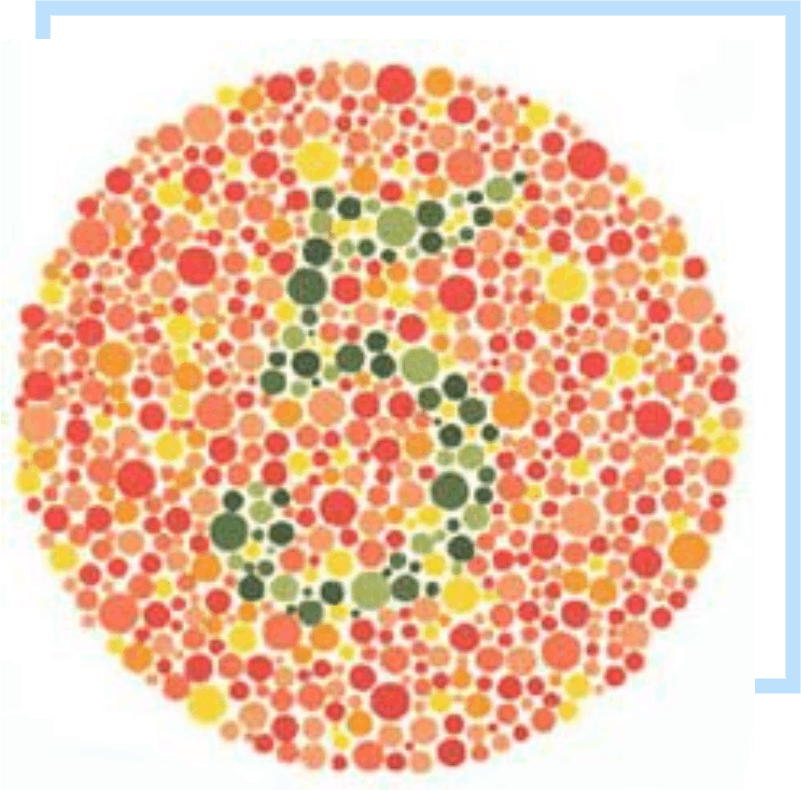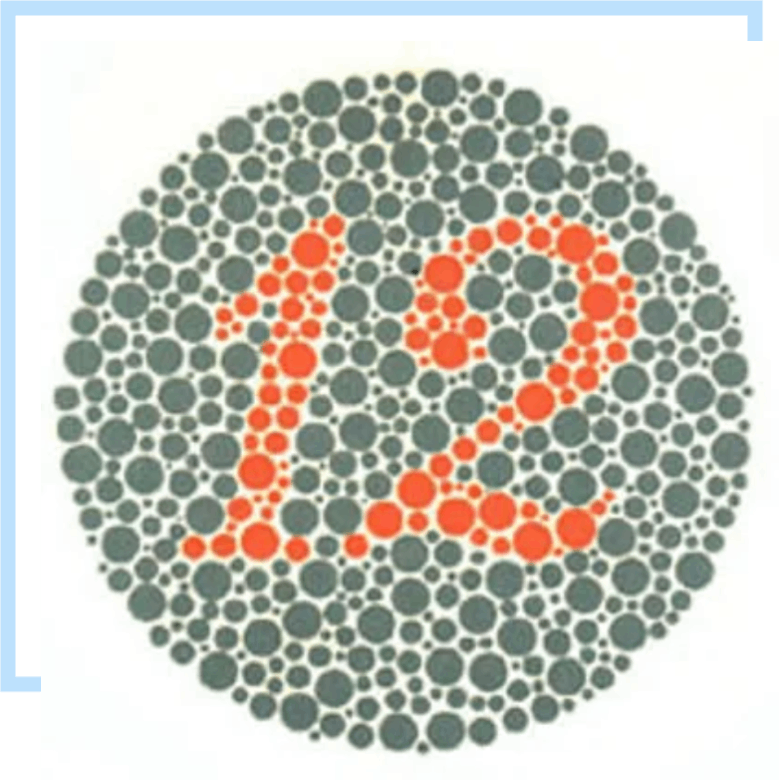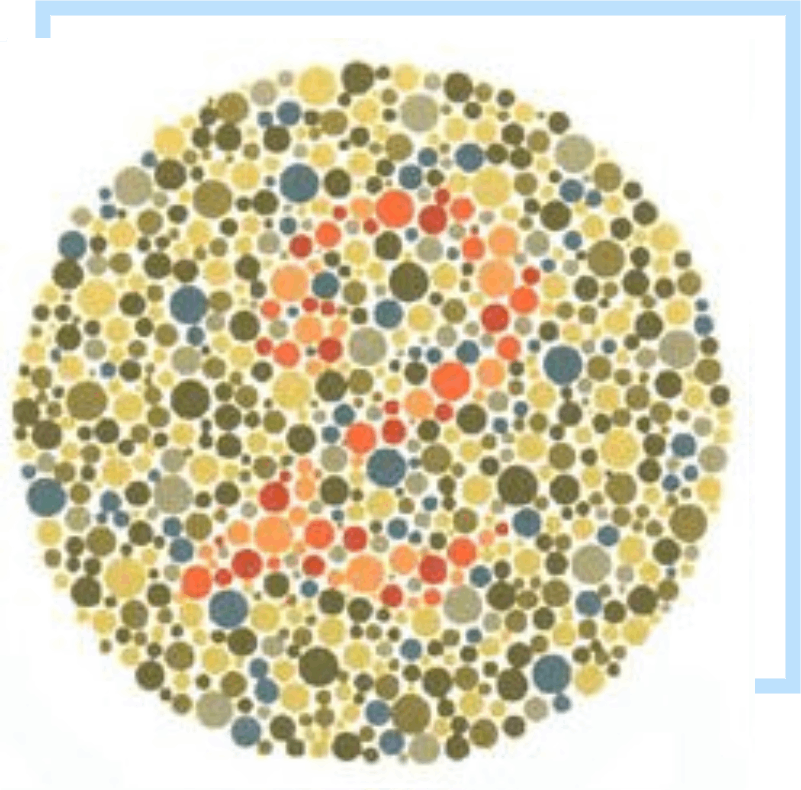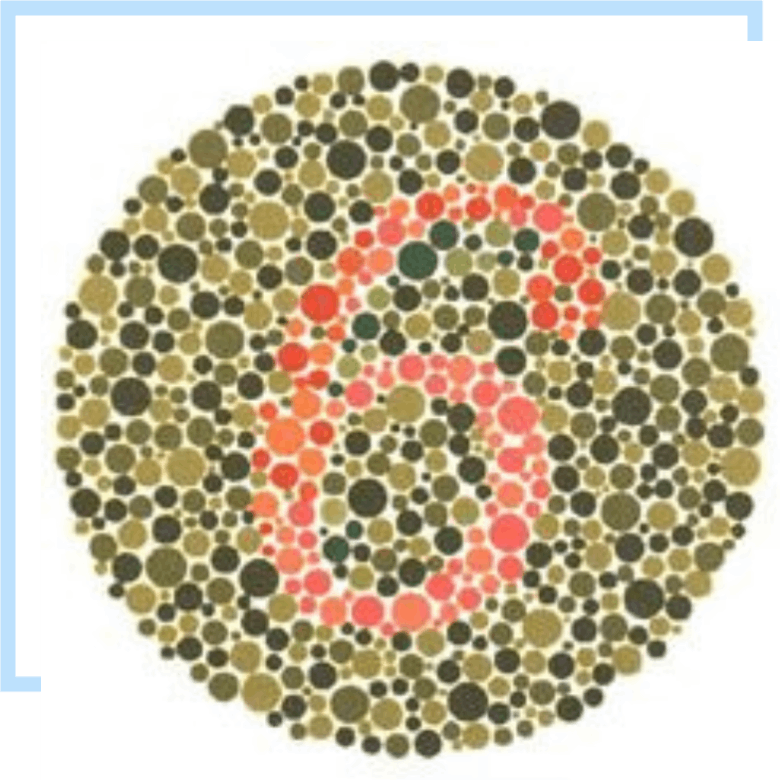Color Vision Deficiencies

Are You Color-Blind?
If you have a color vision deficiency and are not able to pass the CCVT (Computerized Color Vision Test) in my office, I will only be able to issue a 3rd Class Medical Certificate with the following limitation: "Valid for day visual flight rules (VFR) only." The FAA has revised the requirements for color vision requirements that can no longer be approved with any of the previously authorized tests. There is a procedure specified by the FAA (outlined below) that will remove this restriction.
The most common type of color blindness is Red-Green (Protan & Deutan) deficiency. The color slide to the left should be easy to identify by everyone, including someone who has a color vision deficiency. Keep reading to learn more about the FAA color vision test.
This is a complex issue that is genetically determined. About 8% of males are Red-Green color deficient, but only about 0.5% of females have Red-Green color vision deficiencies. This occurs because the genes that determine one's color vision reside on the X-Chromosome, i.e., the trait is sex-linked. Males have only one X-Chromosome, and females have two. For a female to exhibit color blindness, she has to have two X-Chromosomes with the deficiency, whereas males only have one X-Chromosome. In females, if one X-Chromosome has the deficiency and the other doesn't, the female will not exhibit the trait but will transmit the deficient color gene to half of their offspring.
A color-blind female will transmit the deficient gene to all her offspring, so a male born to a color-blind female will always be color-blind because the male's X-Chromosome comes from the mother, and all of her X-Chromosomes have the defective gene.
There are several different types of color vision deficiencies. If you would like to learn more about this, you can visit the website: Colblindor, which has extensive explanations and tests you may take to see what sort of deficiency you have.
Alternative Methods to Determine One's Color Vision
The Ishihara Color Plates are one way to determine whether you are color-blind, however, these plates are no longer authorized for use for FAA certified pilots.
Below you will see 4 of the 38 plates. If you have any Red-Green color deficiency, they will be difficult or impossible to see.
You may download all 38 plates from "Ishihara38."
You can also check colormax.org and take a color vision test online
The only three FAA-approved methods now include FAA Approved Color Vision Tests. This link will take you to the FAA's color vision testing procedures and authorized testing.
The previous tests included the following no longer approved tests: Richmond-HRR, 4th Edition, Keystone View Telebinocular, Titmus Testers, Optec 2000, ACO-HRR, 2nd 1-11, Dvorine 2nd Edition, Farnsworth Lantern (available at PacMed First Hill Clinic near downtown Seattle).
Although the Farnsworth Lantern test is reportedly one of the easiest tests to pass, it is also no longer approved for FAA certification. Previously it had to be taken before every FAA Medical Exam (See below).


The FAA has a very specific method by which they will approve a pilot's color vision. For considerably more detail about this process, please visit the FAA Dispositions Page.
See the FAA Color Vision Testing Flow Chart to learn how pilots with and normal color vision and those with deficiencies must proceed.
What Restrictions Are There for Color-Blind Pilots?
If you have a color vision deficiency and are unable to pass the CCVT, your Medical Certificate issued will have the following restriction: "Valid for day visual flight rules (VFR) only."
IF YOU FAIL THE CCVT, I WILL ISSUE A 3RD CLASS MEDICAL CERTIFICATE WITH THE FOLLOWING “Valid for day visual flight rules (VFR) only.”
If wish to pursue an upgrade to 1st or 2nd class, you will have to appeal to the Federal Air Surgeon.
See the FAA Color Vision Review Form to learn how pilots with color vision deficiencies must proceed. I will complete this form and submit it if you would like the FAA to review it, but at this stage an appeal to the FAS (Federal Air Surgeon) appears to the next step for those pilots with a color deficiency.

